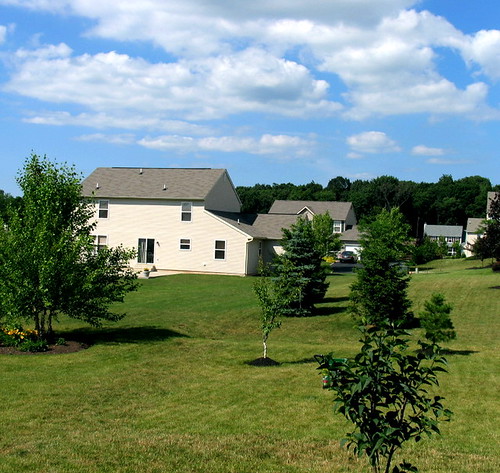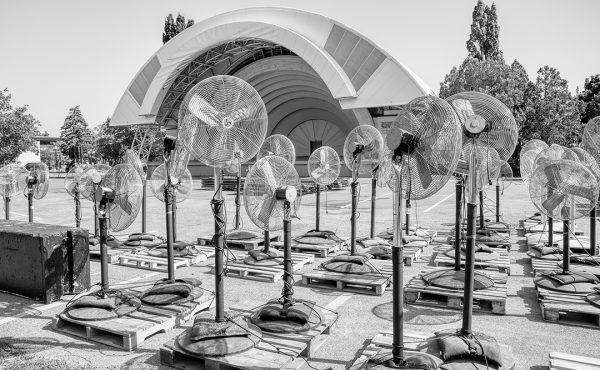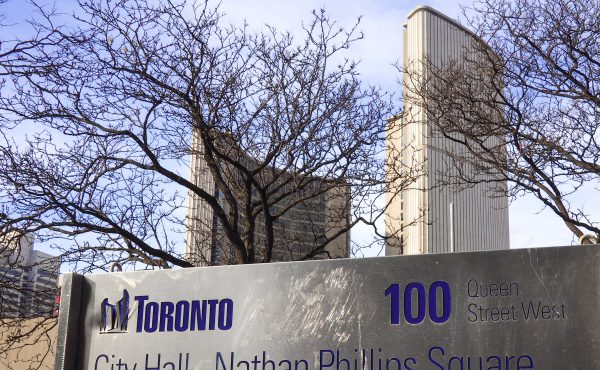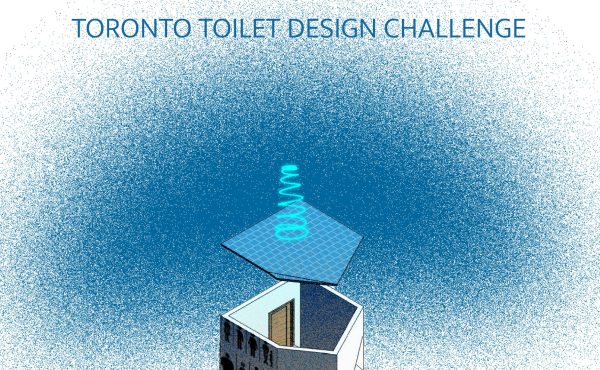
In a bizarre reversal of urban decay, many homes and streets in American suburbs are being abandoned due to a number of reasons, including the fallout of the sub-prime mortgage crisis. The Atlantic magazine’s Christopher B. Leinberger wonders if the ‘burbs will become 21st century slums.
Strange days are upon the residents of many a suburban cul-de-sac. Once-tidy yards have become overgrown, as the houses they front have gone vacant. Signs of physical and social disorder are spreading.
At Windy Ridge, a recently built starter-home development seven miles northwest of Charlotte, North Carolina, 81 of the community’s 132 small, vinyl-sided houses were in foreclosure as of late last year. Vandals have kicked in doors and stripped the copper wire from vacant houses; drug users and homeless people have furtively moved in. In December, after a stray bullet blasted through her son’s bedroom and into her own, Laurie Talbot, who’d moved to Windy Ridge from New York in 2005, told The Charlotte Observer, “I thought I’d bought a home in Pleasantville. I never imagined in my wildest dreams that stuff like this would happen.â€
…
[T]he crisis has indeed catalyzed or intensified social problems in many communities. But the story of vacant suburban homes and declining suburban neighborhoods did not begin with the crisis, and will not end with it. A structural change is under way in the housing mar[ket—a major shift in the way many Americans want to live and work….
For 60 years, Americans have pushed steadily into the suburbs, transforming the landscape and (until recently) leaving cities behind. But today the pendulum is swinging back toward urban living, and there are many reasons to believe this swing will continue. As it does, many low-density suburbs and McMansion subdivisions, including some that are lovely and affluent today, may become what inner cities became in the 1960s and ’70s—slums characterized by poverty, crime, and decay.
photo by Mad Abandon on Flickr




7 comments
The reversal has been going on for a while in Toronto, but rising gas prices will speed things up. When pump prices were at their highest after Hurricane Katrina, I had a large number of people coming by to see a vacant apartment that I had on the Danforth. Many of these people were from Durham region, who wanted to give up the cost of commuting and move into the city.
I also wonder if the home my parents bought in exurbia will be worth anything in 15 years, or will the border of cottage country have moved that far south by then?
Two things come to mind: LA suburbs, and my mother’s ‘white’ town.
LA has had ‘slum’ suburbs for decades: think Watts race-riots of the 60s and 90s. Why that was first for LA must be because LA has nothing but suburbs for rich or poor.
My mother has a new house in Georgetown, itself a suburb to Brampton, a suburb to Toronto. Her neighbours were told by a real estate agent (from whom they did not buy) that there is a premium on houses in Georgetown, because you “don’t have to live with different people.” The agent had misjudged the elderly British couple: they’d worked in Kenya for years.
Race and class are the elephants in the middle of the room N.Americans won’t see. The point of the suburbs has nothing at all to do with square footage and car ownership: it’s all about isolating yourself from people you look down on. My mother’s house will hold its value; money will run from Brampton.
As the price of gasoline goes up, living the the auto-oriented suburbs get more expensive. In Mississauga, it looks like one needs a car to get anything. The “people-friendly” cul-de-sacs actually prevent people from walking. You can have a bus stop visible from your bedroom window, but try to walk to it, you have to walk in circles for a couple of kilometers.
Want to buy a lottery ticket? So you a) hop into a car to drive to the store, b) hop onto a bicycle to the store, or c) walk to the store? In the suburbs, it is usually getting into a car and wasting gasoline for such a small purchase. In the inner city, one walks to the store and at the same time gets some sort of exercise.
In the suburbs, one purchases a tread-mill to walk on for exercise. In the city, one can walk everywhere.
There used to be a time that convenience stores were actually convenient by being available close by, away from the main street. Now, zoning laws prevent that from happening. Zoning laws also prevent residential apartments from appearing on top of the strip malls.
Asphalt deserts at the shopping centre or mall, discourage walking to it, especially in winter. Convenience for transit users are an afterthought in the suburbs.
That is why suburbs are becoming slums, because of the automobile. It is inconvenient otherwise, and expensive.
There used to be a time that convenience stores were actually convenient by being available close by, away from the main street. Now, zoning laws prevent that from happening. Zoning laws also prevent residential apartments from appearing on top of the strip malls.
Great point. And provincial policy has an important role to play here. By way of example, the last NDP administration created a statutory override under which any basement apartments could become legal by bringing it up to code.
That happened to be the NDP. But any party can bring in smart planning policies. Greater advocacy of the sort of zoning overrides that are needed — for that matter, bringing back that particular one, re basement units — is one way provincial politics can have a tangible impact on sprawl, with almost no budget impact and notwithstanding recalcitrant municipalities. Perhaps legalizing convenience stores located at the corner of intersecting streets is another one.
I also wonder if the home my parents bought in exurbia will be worth anything in 15 years, or will the border of cottage country have moved that far south by then?
Do you really think that sprawl has been receding southward? Drive north on the 400, Yonge, or 404 and it seems to me you’ll see the opposite. The core has been densifying. But sprawl has been spilling outward, too. Hopefully the greenbelt will hold it back. But, well, it’s not the first time we’ve tried that.
The point of the suburbs has nothing at all to do with square footage and car ownership: it’s all about isolating yourself from people you look down on.
I think that’s overstating things a bit. Often, the point of the suburbs is about nesting yourself with people you feel community with, true. That’s why Toronto’s suburbs house so many ethnic enclaves and neigbourhoods, including the examples you cite, Georgetown’s British/WASP neighbourhoods and Brampton’s South Asian and Portuguese neighbourhoods.
But that need not slums make. On the contrary. This is a classic example of Jane-Jacobs-ite neighbourhood planning and lack thereof.
add the declining stock and increasing price of natural gas to the mix and the idea of living in a detached 2500 plus sq. ft. will become pretty expensive
I think what many here are forgetting is the cost of maintaining a home in suburbs. If your ceiling or walls are not shared with appartment above you or beside, heat is lost, regardless of how well you insulate. In suburbs you have maybe 20 homes (taxpayers) connecting to a sewer line/road. In city you have about 50 taxpayers/homes supporting this infrastructure. Toronto has had a difficult time maintaining is older infrastructure in high density conditons. Now as 905 begins to age who is going to pay to upkeep its infrastructure? When we build our cities we only give consideration to finance construction not the long term maintainace.What happens when overpasses need replacement? As taxes go up to maintain this, fuel goes up, people are just going to get fed up with the cost.
I am about to graduate civil engineering soon and I went to school to make my life easier not to be financially enslaved to a lawn and paying for unsustainable infrastructure. What about rising fuel costs?. I plan to walk, bike, take transit, and go to a pub in evening on weekdays IN MY NEIGBOURHOOD, not be enslaved in a cul de sac very expensive, high maintenace maze in the middle of no where. I think others are asking, “why am I trying to make something work if it doesnt work?” (meaning burdened with debt-like furniture for big home, and cars to drive and maintain) This is why burbs are failing. Its sorta a stupid lifestyle, unless you are rich enough to hire a cleaner and gardner.
Anyhow thats the way I see it 🙂
Ten years ago the price of copper (used in electrical wires and pipes) was 75¢ a pound. Today its $3.75 a pound. So the more copper (wire, pipes) you use, the more expense. Its cheaper with homes closer together because the city uses less, stringing the wires or laying the pipes home to home in case of repairs. There’s other expenses, like the amount of asphalt for the roads or concrete for sidewalks is more in the suburbs.
A new development has all this laid down by the developer, and in turn gets the expenses paid by home buyer, not the city. After so many years, its the city that has to pay for repairs. And in the home, its the home owner who has to pay the inflated price for repairs.